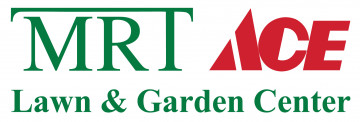
New to Southwest Florida?
New to Southwest Florida?
Here are some things you should know about gardening in the subtropics-
Are you a gardener and don’t understand why some of your plants aren’t surviving, or maybe you’re confused about Florida’s sandy soil, the blazing heat, and the high humidity? Maybe you were born in Florida or maybe you just moved here last month, regardless - welcome to the subtropics - this post is for you!
What parts of Florida are subtropical?
West, Central, and Southwest Florida are located in what is referred to as the Subtropics, between the Temperate Zone to the north and the Tropical Zone just to the south. Our area’s grow zone is 10A.
Let’s start with the soil -
Our official state soil is a type of sand unique to Florida called Myakka, a fine, light gray sand that covers more than 1.5 million acres of the state. Formed in sandy marine deposits, Myakka soils are the most prevalent soil types in the state. The soil consists of rock, sand, marl, and muck. The rock is known as Miami limestone, which is an alkaline calcium carbonate. It is not coral rock as some believe. (Calcium carbonate is also the chalky residue left on plants after using reclaimed or hard water)
Florida’s sandy soil a frustration of many new gardeners. Believe it or not there’s a reason why our soil is so sandy…
Our native plants love it and so do a number of other tropical plants!

(Coral Honey Suckle and Beach Sunflower love sandy soil)


(Passion Flowers and Powderpuff mimosa also love sandy soil)

Florida also averages nearly 54” of rainfall each year and. If our state didn’t have fast-draining soil, Florida would probably be flooded, and I know we don’t want that!

Inter coastal waterway. Venice, FL
Depending on what you’re trying to grow, sandy soils are best for plants that like when their roots dry out quickly, but our soil can also be adjusted to support plants that do not.
Wondering about watering and rain in your garden?
Check out our prior blog post:

https://mrtlawnandgarden.com/blog/86564/are-the-summer-rains-enough-to-water-your-plants
How do I amend the soil?
You can improve your soil with a host of Florida-friendly organic amendments, such as mushroom compost, wood mulch, manure, worm castings and composted yard waste.

If you are fertilizing, be mindful of local fertilizer ordinances (and bans) by referring to the Florida-Friendly Landscaping™ Fertilizer App:
https://ffl.ifas.ufl.edu/fertilizer/
If you fertilize inappropriately, your plants will not benefit from the nutrients you are providing, and there can also be negative environmental implications. If you do fertilize anything in your landscaping, fertilizing appropriately is essential to do your part in maintaining ecosystems throughout our state.
Why aren’t my “northern” plants growing here?
Let’s face it, the #1 reason-Northern plants don’t grow in Florida is the heat and humidity.
Most plants that grow in the “North” simply don’t like our heat and will quickly decline. When we try to grow plants from other zones, that’s called “zonal denial” (we’ve all participated in it at some point and still do).
Most plants prefer growing zones 6-9. When you grow plants out of their “comfort zone” they won’t thrive as well as they should. One example is hydrangeas, here, you can purchase them in patio pots seasonally and enjoy them as an annual, but they will not thrive outside here as they require a cold and dormant period, as most plants from the north do.
Example: If you’re missing the blue flowers of hydrangeas, consider Plumbago with its clusters of blue (or white) flowers.

(Plumbago)
As mentioned above most plants from the north require a cold dormancy period. Consider them annuals here.
A good way to see what’s growing and thriving locally, is to walk around your neighborhood, visit local parks, botanical gardens, and good quality nurseries. Though keep in mind most do add flowering annuals as fillers seasonally.

Ginger plants in a shady garden

Colorful Crotons at the Sunken Gardens. St Petersburg, FL
Take pictures of the plants you like, bring them in to one of our MRT locations and show our plant yard associates, we will be able to identify and tell you more about them.

Copper leaf

Variegated ginger
In addition, you can read about more heat and humidity loving plants here:

https://mrtlawnandgarden.com/blog/86530/heat-and-humidity-loving-plants
Gardening in the SW Florida subtropics can be challenging, so once you learn about what the local plants like it will be much easier!
If you have questions be sure to stop in and talk with one of our plant yard associates.
